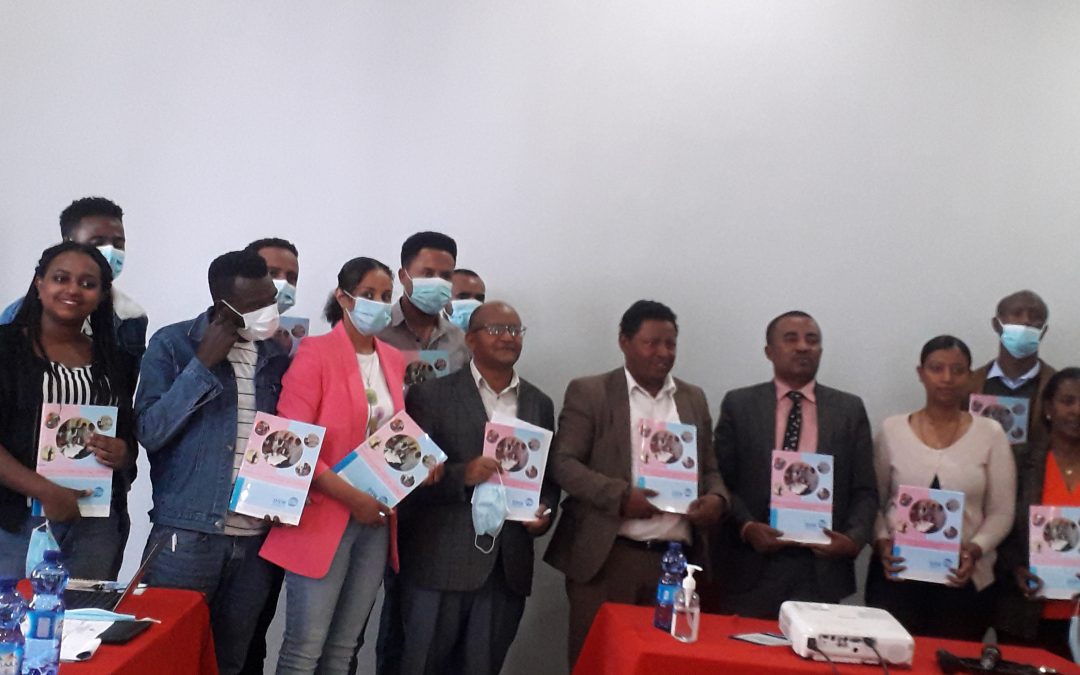DSW’s Adolescent and Youth Sexual & Reproductive Health (AYSRH) Manual, was launched during a half day workshop at Aphrodite Hotel on 28 April 2022 in Addis Ababa. The 6th edition of the AYSRH Manual was revised and once again endorsed by the Federal Ministry of Health (FMoH.) The workshop convened thirty stakeholders representing the FMoH and other relevant partners who during the revision phase of the Manual took stakes in a taskforce team.
DSW’s AYSRH Manual is intent on meeting the dynamic needs of Ethiopian youth on sexual and reproductive health and rights (SRHR),” stresses Fekadu Yadeta, a senior advisor of State Minister of the FMoH who also presented a keynote speech.
“The latest version of the AYSRH Manual has embraced topics that deal with youth-friendly service provision. DSW observes and collects the most competing new topical issues particularly relevant to youth SRH needs and floats them for an evidence-based assessment before the taskforce team for incorporating the new elements,” asserts Feyera Assefa, the Country director of DSW Ethiopia in his opening speech at the workshop.
“Each phase in the process of the revision makes the manual more comprehensive both in terms of content and features. In fact, we have already initiated to prepare and publish the manual in three additional local languages based on a request from the African Medical and Research Foundation (AMREF). This makes DSW’s AYSRH Manual one of the most linguistically diverse documents to be disseminated. With the latest addition of languages already underway, the manual will be available in five different languages, including Afan Oromo, in Afar, Amharic, Samali and Sidama. This modular-based AYSRH Manual has been tailored-made for guiding the training-of-trainers conducted by core facilitators. A pocket-sized version of the AYSRH Manual is also available for quick reference. This is used by the participants at the cascading level of training,” Feyera explains.
The fact that the youth-friendly components have become relevant topics to be included in the latest version of the manual, it coincides with the new development in which DSW Ethiopia ventured for the first time into a service provision based intervention through a pilot project in youth-friendly clinics.
“We at the Federal Ministry of Health took time in the reviewing of the AYSRH Manual submitted by DSW. Our team went through a page-by-page revision of the Amharic and Afan Oromo versions of the manual after which an official endorsement was granted. It is also important for wider audience outreach to post the electronic version of the AYSRH Manual on the ministry’s official website,” says Haregewoin Tadesse from FMoH who is a senior technical advisor at Maternal & Child Health directorate.
In her presentation, Mrs. Haregewoine reaffirmed that “DSW’s social and behavior changing communications (SBCC) intervention is a replicable model. We consider the youth-friendly manual as a useful subset of the National Adolescent & Youth Health Strategy, which was prepared by the FMoH. Given the impact, plans by our ministry are underway to scale up DSW’s SBCC-focused youth-friendly activities in a broader program package by including the income-generating schemes.”
“In addition to the eight youth-friendly service standards set by the World Health Organization (WHO), our ministry has extended the ninth component within its strategic document on the basis of needs and relevance in the context of Ethiopia. The ninth in addition focuses on a multi-sectoral approach,” Haregewoine put further emphasis on the importance of youth-friendly services aligned with the principle of World Health Organization.
During the closing phase of the workshop, Feyera commented that “when DSW ventures to engage in a youth-friendly service provision, it takes the service to the youth making it convenient for them to receive the services”.
Hosting a workshop to launch the updated version of AYSRH Manual is part of the advocacy strategy continued from the past events to ensure a consensual engagement by the partners and key stakeholders alike who recognize and take a great deal of sense of ownership in the maximum utilization of this manual, which evolved over the past twenty years.
Photo: private

